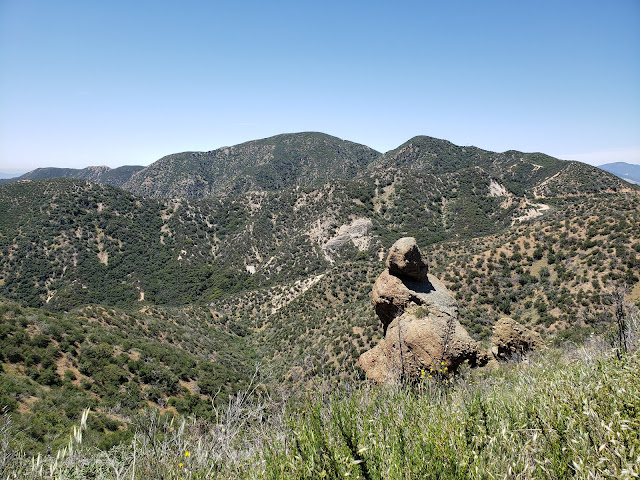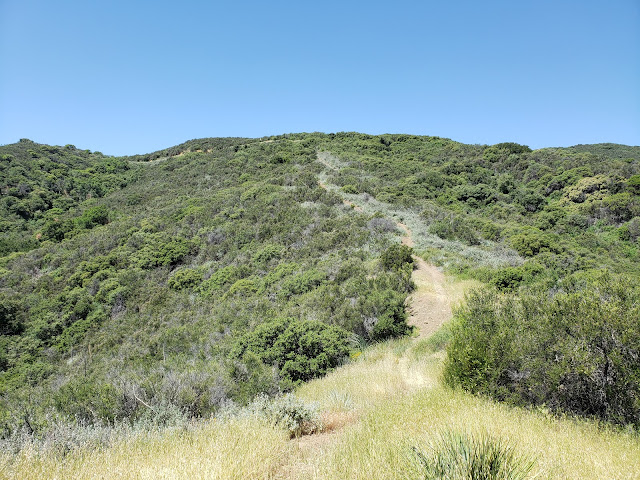Sentiment without action is the ruin of the soul.
~Edward Abbey, A Voice Crying in the Wilderness
Get away from me!
~Eustace Bagge, Courage the Cowardly Dog
I've never been much of a "joiner." What I mean is that I've never been terribly fond of becoming part of some collective "we" that assembles sporadically or regularly to accomplish some task or to engage in a communal activity. I've done that type of thing before in my life, but it's always felt unnatural, inauthentic, and slightly forced. And if I'm honest with myself, it has almost always been the consequence of some self-imposed social pressure and the silly desire to fit in, to be accepted, to be one of the "cool kids." Even if that meant suppressing my natural inclinations and/or tempering my instinctive nerdiness and unconventional world-view.
So as a young lad, I participated in scouting, first as a Cub Scout, then a Webelo, and finally a full-fledged Boy Scout. I liked the actual scouting piece of it, but not so much the group dynamic. I also found the cozy admixture of knot-tying and religious indoctrination troubling if not downright repugnant. What in God's name did staking a tent or starting a fire have to do with Jesus anyway? Nothing as far as I could tell other than keeping me in-line and on the straight-and-narrow. But I didn't really care to be on the straight-and-narrow. And neither the scouts nor "the brethren" appreciated doubters, independent-thinkers, or trouble-makers. After all, there were rules to be followed, flags to be saluted, invisible Gods to be worshipped, and serious oaths to be taken. And that wasn't me. So before I ever achieved my Eagle, I drifted away a scouting loser much to the dismay of my poor mother who must have regularly asked herself "why can't he just be like all the other good Mormon boys?"
When I got older and entered college, I followed my childhood best friend into a frat house. Our friendship was waning some at that stage, but I still looked up to him. And I was a follower. So where he went, I went. And that was into Greek life. It was a fraternity for mostly white, good-looking, athletic and popular kids from the wealthy side of town. Lots of BMWs, loafers, Polo shirts and everything that went along with that. I was somewhat surprised they even let me in the door. I'm even more surprised that I knocked in the first place. With my long hair, VW Rabbit, aversion to golf, flannel shirts, and crunchy enviro-ethics, I was an anomaly. And as soon as I was permitted entrance into the the exclusive club, I regretted what I had done. I'm sure my fraternal brothers harbored some regrets of their own. So I slunk away from the whole ridiculous scene to spend time with the hippies, dorks, and dope-smokers in the Biology department who shared my nascent enthusiasm for evolution, ecology, and systemmatics. That afforded me the opportunity to spend part of a summer in independent study sitting in a lab picking microscopic nematodes off of root knots for a tenured professor who was researching how marigolds rebuff the parasitic little roundworms.
You could be forgiven at this stage for thinking that perhaps I'm a loner. But it's not necessarily that I'm anti-social, or that I don't like people. It's just that I'm anti-social and don't like people. Or at least I don't like lots of people doing the same fucking thing that I'm doing at the same place and time that I'm doing it. I don't need that type of camaraderie or want the social stroking. And I don't fancy the associated chaos, complexities, and cacophony that comes with group projects and outings.
My predilection for crowd-avoidance has carried over to my outdoor activities. I don't enjoy large group hikes so rarely participate in them. They typically involve too much disappointment and compromise. Somebody's late. Someone else bails at the last minute. There's the constant stopping and waiting for the group to reassemble at every conceivable trail junction lest someone gets lost because they didn't think to look at a damn map before going out. Then the group has to wait for me because I'm older and dragging the pace down. Fuck that. I don't want to be the subject of furtive glances and frustrated whispers.
Beyond all of this, at base level I'm just a selfish bastard with my limited outdoor time. I don't want to go where you want to go. I want, to go where I want to go. And when I want to go. And how long I'll stay there. Admittedly, that's not a particularly endearing quality, but at least it's honest. But honesty only gets you so much these days, so more often than not, my hiking companions are limited to me, myself, and I. No one else can stand to be around me. I am the Eustace Bagge of the hiking world.
Because of that, I'm not exactly a prime candidate for organized trail work parties. I've done trail work and trash pick-up before, but only as a solo, guerrilla undertaking. I've cleared both Russian Thistle and Black Mustard by myself from my local trail. I've hauled many a heavy load of broken glass from the slabs in the hills near my house where teenagers escape to get inebriated and then joyously fling their empties down the sandstone rock-face to explode into a millions glittering shards. And I've picked up and carried out of the hills more candy wrappers, cups, soda cans, water bottles, buger-encrusted tissues, sweat rags, pee rags, shit rags, dog shit in baggies, and dirty undies than I can remember. But it's always been a solitary effort.
Until recently that is. Contrary to my natural predisposition to go it alone, I've recently tried my hand at some actual, organized and officially-authorized trail work. You know, the kind of work where some government functionary pre-clears everything you intend to do, dictates the number of people that can participate, approves the types of tools that can be used, and drafts the language of the release that you must sign to prevent you from suing when you stab a Pulaski into your shin or an unseen rattlesnake sinks its fangs deep into your calf. All while sitting in an idling truck in the parking area burning fossil fuel and just waiting to hand some poor slob a ticket.
My first go at this was in Santa Paula Canyon shortly after it was closed to the public due to over-crowding. Santa Paula Canyon has been an abused and graffiti'd trash-heap for years, but with crowds swarming the place because of the pandemic, it had become a veritable sewer. Spray-paint marked every rock, stump, and branch. Garbage was strewn hither and yon. Used diapers, feminine products, and reproductive prophylactics were not an uncommon sight. New use trails all through the canyon bottom spontaneously appeared. In short, the place quickly went to hell, but the Forest Service, perpetually short on money and man-power, was ill-equipped and/or unwilling to assume the mantle of responsibility and do anything about it.
Enter Santa Paula local Ellie Mora aka mtnbabe aka Los Padres badass who took control. She solicited and obtained the Forest Service's blessing, organized a clean-up, secured the necessary tools, and then recruited help. Fortuitously and fortunately, I ended up being part of that help. I was joined by a bunch of other like-minded, yet much younger forest regulars as well as local Boy Scout Troop 111. Over the course of several outings, the group scrubbed or covered-over graffiti, removed multiple dumpster loads of some of the most disgusting garbage imaginable, reconfigured and improved trails, trimmed evil poison oak, and broke down and removed rock dams from the creek-bed. Very dirty, difficult, yet immensely satisfying work. Especially when your regular routine is to sit behind a desk for nine hours a day staring at a screen and getting a pasty fluorescent light tan. Getting grimey is good for the soul.
Then this past weekend, Ellie organized another work party in conjunction with the Los Padres Forest Association. This time, we would be working the nature trail at Wheeler Gorge just north of Ojai along Highway 33. As I drove up Grimes Canyon at 7 a.m. and then began the swirly drop into the Santa Clara River valley I could already feel the heat coming on. The weather gods had guessed it was going to be 102 and it felt like they were going to be right. Clad in long pants, long sleeves, and work boots to keep the itchy and poisonous plants at bay, the dread began welling up in me.
Forty-five minutes later I was at Wheeler Gorge with the rest of the work crew. After demonstrating the the proper use of the mcleod, Ellie informed everyone that we would be segregating into two different groups: one group would work the upper trail in the scorching sun, and the other group would work creekside in the shade ripping out poison oak. Make your choice, heat or poison oak. I pondered this "damned if you do, damned if you don't" proposition and decided I'd take the heat. I had just recovered from a nasty bout with poison oak and I wanted no part of that again. Then Ellie said she also needed a couple of volunteers to walk the creek and bust rock dams. No one raised their hand so I jumped at it. A third option that didn't involve heat or poison oak? Mama didn't raise no fool.
For the next three and half hours, my work companion (code name Bear Woman) and I splished and splashed through the N. Fork of Matilija Creek finding artificial rocks dams and then dismantling them. This involved lifting and moving an endless number of heavy rocks, tree trunks, and other material from the creek and redistributing it elsewhere so that the creek could again flow freely. It's surprising how much effort some folks will go to in order to build these annoying things in the first place. It involves some degree of engineering, a lot of time, and a lot of muscle power. Just for a trailside pool.
Anyway, when we finished our task, we committed to head up trail to let Ellie know we were done. At that moment, she suddenly appeared on the rise above us to tell us her crew was finished as well. So we all picked our way through the forest back to where we began and called it a day before the real sweltering heat set in.
So does this mean that I'm now cured of my group-phobia? Am I jonesing to go on a hike with 20 others? Not really. I'm still pretty much a cranky old lone wolf. I'll continue to do my own, unauthorized thing. But when it comes to trail work, I definitely have no aversion to linking up with what I consider to be the next generation of local Los Padres hot-shots and stewards. When it comes to them, I've become a "joiner."






















































